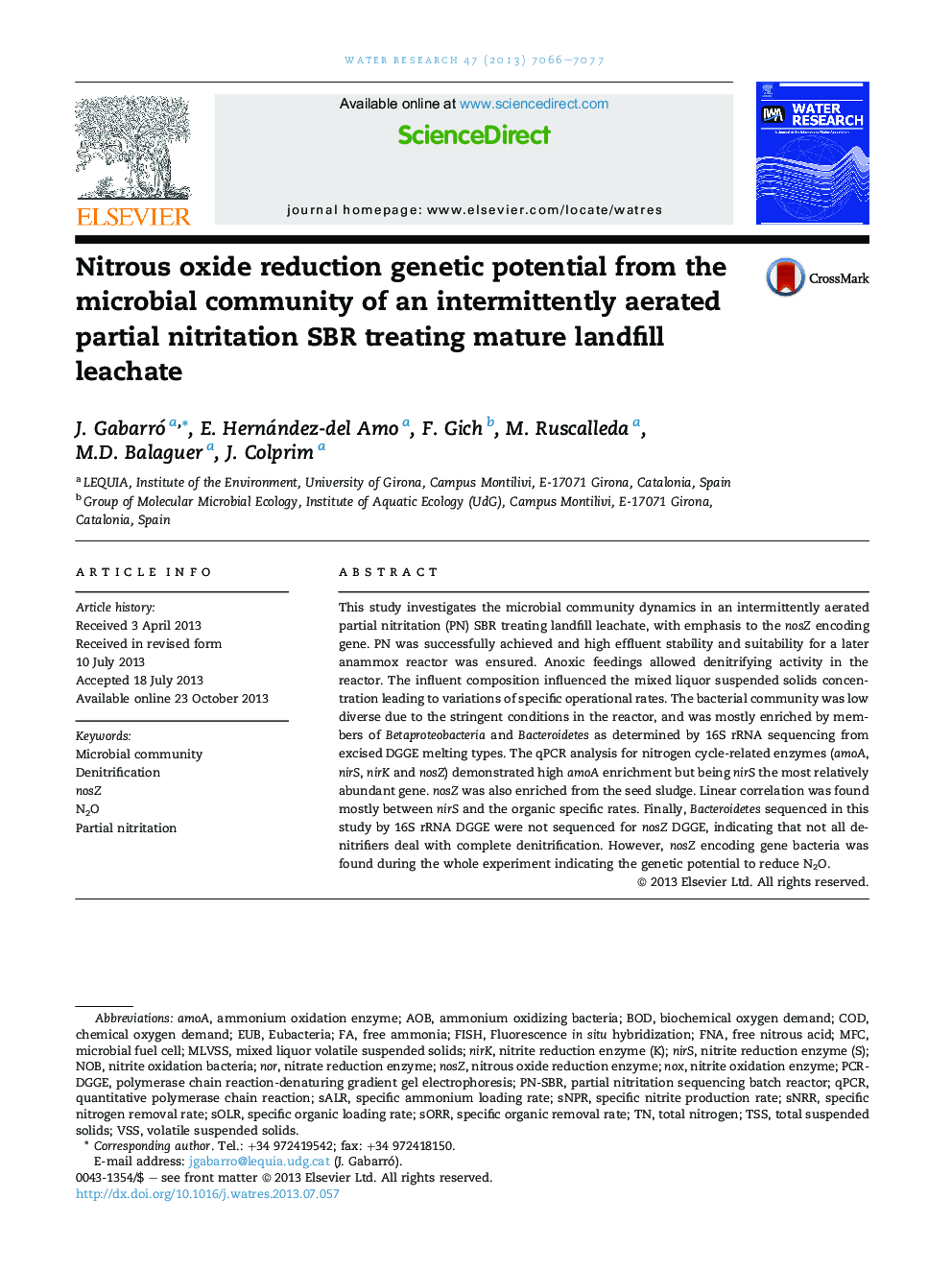| Article ID | Journal | Published Year | Pages | File Type |
|---|---|---|---|---|
| 4481745 | Water Research | 2013 | 12 Pages |
•Complete characterization of the microbial community in the PN-SBR sludge.•PN-SBR sludge contained Comamonadaceae, AOB, Flavobacteriales & Sphingobacteriales.•Heterotrophic organisms were well adapted on using low biodegradable COD.•Potential N2O reduction capacity was always detected by nosZ analysis.
This study investigates the microbial community dynamics in an intermittently aerated partial nitritation (PN) SBR treating landfill leachate, with emphasis to the nosZ encoding gene. PN was successfully achieved and high effluent stability and suitability for a later anammox reactor was ensured. Anoxic feedings allowed denitrifying activity in the reactor. The influent composition influenced the mixed liquor suspended solids concentration leading to variations of specific operational rates. The bacterial community was low diverse due to the stringent conditions in the reactor, and was mostly enriched by members of Betaproteobacteria and Bacteroidetes as determined by 16S rRNA sequencing from excised DGGE melting types. The qPCR analysis for nitrogen cycle-related enzymes (amoA, nirS, nirK and nosZ) demonstrated high amoA enrichment but being nirS the most relatively abundant gene. nosZ was also enriched from the seed sludge. Linear correlation was found mostly between nirS and the organic specific rates. Finally, Bacteroidetes sequenced in this study by 16S rRNA DGGE were not sequenced for nosZ DGGE, indicating that not all denitrifiers deal with complete denitrification. However, nosZ encoding gene bacteria was found during the whole experiment indicating the genetic potential to reduce N2O.
